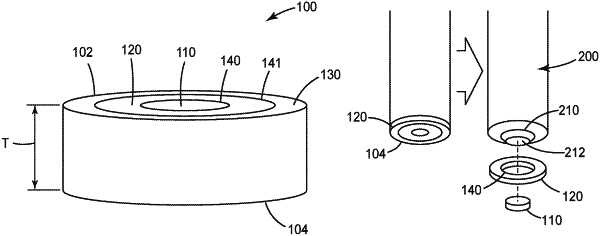| CPC A47B 91/06 (2013.01) [A47B 91/02 (2013.01); A47B 91/04 (2013.01); A47B 91/12 (2013.01); A47B 2091/063 (2013.01)] | 9 Claims |

|
1. A furniture pad configured to lie between a furniture leg and a floor to prevent scratching of the floor as the furniture leg is moved along the floor surface, the pad comprising:
a body including a protective material, a top surface defining a plane and an attachment surface, and a bottom surface opposing the top surface and defining a protective surface, wherein the body includes an inner segment, a first outer segment, and a second outer segment,
wherein the inner segment has at least one smaller cross-sectional dimension than the first and second outer segments, wherein the inner segment is detachable from the first outer segment along a first separation path, wherein the first separation path extends through an entire thickness of the body in a direction generally orthogonal to the plane, wherein the first outer segment completely surrounds the inner segment, and wherein the first separation path defines an outer periphery of the inner segment,
wherein the first outer segment is detachable from the second outer segment along a second separation path, wherein the second separation path extends through the entire thickness of the body in the direction generally orthogonal to the plane, wherein the second outer segment completely surrounds the inner segment and the first outer segment, and wherein the second separation path defines an outer periphery of the first outer segment.
|